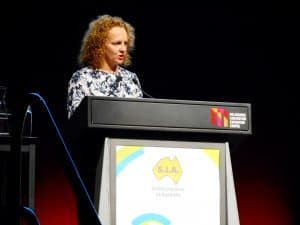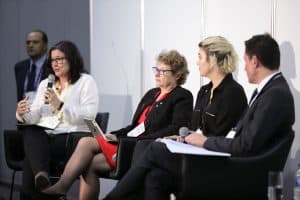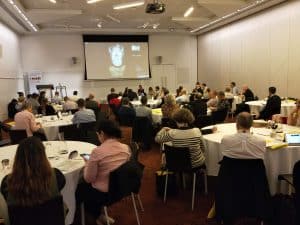
The 2018 Congress of the Australian Council of Trade Unions (ACT) is happening in the middle of a campaign to “Change the Rules”. These “Rules” are largely concerning with industrial relations, of which Occupational Health and Safety (OHS) is a subset, or complementary, element. Legislation constantly needs challenging and review; much legislation, like Australian Standards, misses their expiry dates and persists too long, becoming increasingly seen as irrelevant.
OHS has the “luxury” of having been reviewed nationally within the last decade. For some Australian States this change was progressive but for most it was a catch up to contemporary standards and expectations. OHS laws have not progressed since and a lot of hope is placed on the current Independent Review of Work Health and Safety (WHS) laws to enliven the discussions, yet that report is not due until 2019.
Trade unions have a great deal of faith in legislation to achieve change.



 Throwing chocolates to delegates, audience participation, push-ups, book giveaways, hand-eye coordination exercises – not the usual elements of the opening keynote speaker of a safety conference. Day 2 of the Safety Institute of Australia’s
Throwing chocolates to delegates, audience participation, push-ups, book giveaways, hand-eye coordination exercises – not the usual elements of the opening keynote speaker of a safety conference. Day 2 of the Safety Institute of Australia’s 
 Let’s acknowledge the problems with this year’s
Let’s acknowledge the problems with this year’s